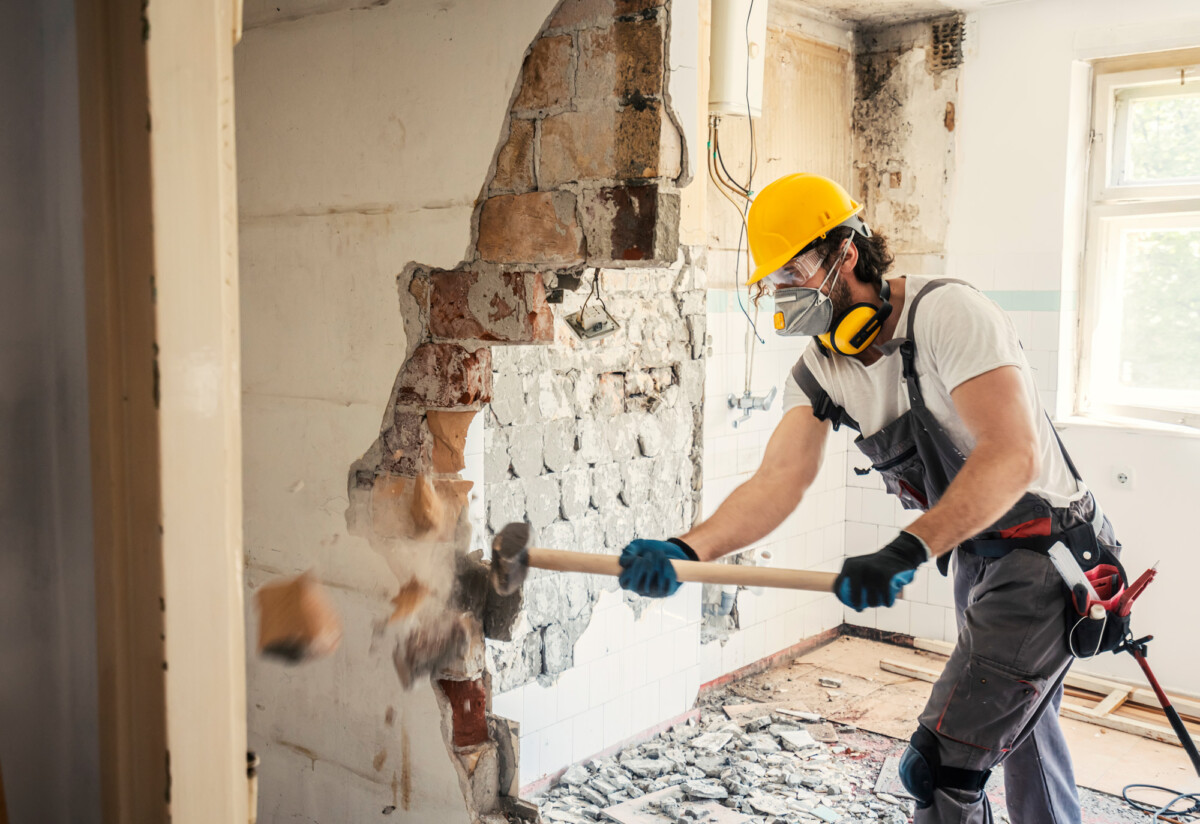Reno insurance clarified
21 Jul 2023, Insurance, Learn, Prove Your Know How

Managing the risk that comes with doing building work is an important part of any project. Builders need to be aware of all the risks associated with the job and take steps to mitigate them. Here, insurance expert Ben Rickard discusses what insurance you need while doing renovations
Ensuring the right insurance is in place is one part of that risk management plan. There are two main policies that need to be in place when undertaking renovations – contract works insurance and public liability insurance.
Contract works insurance
This is also referred to as builders risk insurance and covers accidental damage or loss to the works under construction. House insurance may include an allowance for minor renovations, but the amount of cover will depend on the insurer and the scale of the work. Regardless, you should ensure that the homeowner has checked their policy and notified their insurer that work is being done.
With more substantial work, such as that over a specific value or involving structural work or works requiring a consent (depending on what the house insurance covers), contract works insurance needs to be arranged.
The building contract should stipulate who needs to arrange this cover and, in the case of work on an existing structure, this responsibility usually falls on the building owner. The policy should name the builder and cover subcontractors as well.
Here are some other tips to make sure you’re properly covered:
- Recommend the homeowner notify their insurer when work is being done.
- Follow the terms of the contract regarding who arranges the cover (this should be the homeowner in the case of renovations).
- Make sure you see a copy of the policy before starting work.
- Set a reminder to ensure that the policy is extended if completion is delayed.
- Remember to increase the sum insured if the project cost rises.
Cover generally ends on the earlier of:
- the end date on the policy, or;
- the completion of the work, or;
- when the owners occupy or put it into use.
The cover ends on whichever comes first.
Contract works insurance claims
Even though the homeowner has arranged the policy, it will still cover damage that the builder or a subbie has caused to the works. For example, a damaged vanity, benchtop or appliance.
You are entitled to make a claim on the policy for any accidental damage, even if you were responsible for it – that is why the insurance is in place and why you need to be named on it. In these situations, you may be responsible for the excess (refer to your contract). You can also make the claim yourself if the homeowner refuses to, which is another good reason to get a copy of the policy up front.
Faulty workmanship is excluded, as is damage caused by external water penetration due to a failure of the works to comply with the Building Code (known as the Building Defects Exclusion).
Public liability insurance
Also known as broadform or general liability insurance, this covers your liability for accidental damage to someone else’s property. It is essential when you’re working in and around a client’s existing structure, where the potential to cause damage to property outside the project works itself is much greater. For example, damaging carpets in a house where you’re renovating the bathroom, or water damage to a downstairs ceiling from a leak in a newly installed shower.
Public liability insurance won’t cover damage to property you own. That means any materials, components and appliances you supply as part of the job aren’t insured by public liability insurance, these fall under the contract works cover. The exception is if they are damaged after the contract has been completed and the works have been handed over to the client.
Public liability insurance can cover damage caused by faulty workmanship, including remediating defective work. But, as with contract works insurance, it won’t cover your liability for damage caused by external water penetration (and some insurers argue it won’t cover any water leaks).
It’s also important to note that you’re only insured for the occupation stated on your policy. So, if you’re doing a commercial refit but your policy only covers residential work, then you may have a problem. This can also apply if you undertake activities such as plumbing, roofing, tiling, waterproofing or electrical work that is outside the scope of your insured occupation.
Hidden gradual damage
When damage is discovered after the job has been completed, a claim should generally be made on the house insurance first. This is because the claim will get assessed and repaired by the house insurer, who will then seek recovery of their costs from the tradesperson involved. If a claim is made directly on the builder’s liability insurance, the cover is limited to indemnity value (ie, a depreciated value depending on how old the damaged items are), rather than replacement cost. This means the claim settlement may not be sufficient to cover the full cost of any remediation.
However, this is a tricky area as most house policies will have a very low amount of cover for claims that relate to hidden gradual damage, such as a slow leak behind a wall that causes timber to rot over time before being discovered. The house insurer may offer to cash settle the homeowner for that minimal amount, leaving them to find the rest some other way, such as pursuing the tradespeople involved. If the claim is for gradual deterioration, then it may also be excluded under the public liability insurance’s Building Defects Exclusion.
Here is an example of what this clause says:
Building Defects Exclusion
We will not indemnify You for any claim under this Policy in respect of or alleging Personal Injury or Property Damage arising out of:
a) the failure or alleged failure of any building or structure to meet or conform to the requirements of the New Zealand Building Code contained in the First Schedule of the Building Regulations 1992 or any applicable New Zealand Standard (or amended or substituted Regulation or Standard) in relation to leaks, water penetration, weatherproofing, moisture, or any effective water exit or control system; or
b) mould, fungi, mildew, rot, decay, gradual deterioration, microorganisms, bacteria, protozoa or any similar or like forms in any building or structure.
The interpretation of this exclusion can vary by insurer, so it’s important to seek good professional advice and have a solid understanding of your policy.
In a nutshell
You need to tread carefully when it comes to insurance covering renovation and alteration work. Contract works insurance must be in place, generally arranged by the homeowner with their existing house insurer. Public/general/broadform liability is also essential, as this protects you from liability for accidentally damaging other property while you are on site. Claims for damage due to water leaks can be very complicated, so having the right professional advice is crucial.
Builtin are New Zealand’s trade insurance experts. For more information visit www.builtin.co.nz, email Ben Rickard at ben@builtin.co.nz or call him on 0800 BUILTIN.
Register to earn LBP Points Sign in
1 Comment
Leave a Reply
You must be logged in to post a comment.




very important